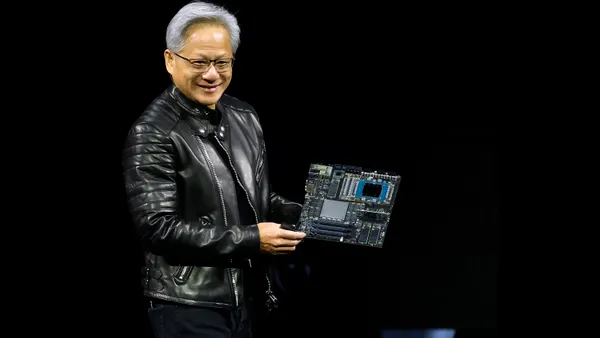Dive Brief:
- Businesses are challenging network capacity with the adoption of advanced technology, but only 36% say their network has the capacity to meet business demands, according to an Accenture survey of 300 enterprise IT and business executives, released Wednesday.
- Driving the network constraint is a lack of alignment between business and IT needs, a leading barrier for 48% of respondents, the survey found. "Inherent complexities between business requirements and operational needs," and challenges in meeting bandwidth and performance needs are also cited as leading barriers.
- "Most companies forget the network because they are stuck in their old approach," Charles Nebolsky, managing director and network practice lead for Accenture Technology, told CIO Dive in an email. Businesses replace network devices as they fail, leading to a patchwork of offerings ill-suited for modern bandwidth demands.
Dive Insight:
People don't thank IT for keeping the internet running — they just expect it to always work. When it goes down, all hell breaks loose.
Network upgrades do not fit in the flashy narrative of cloud first, cloud always technology, where businesses are prioritizing digital investments. Infrastructure upgrades are not as marketable for IT leaders fighting for budget.
The challenge is ignoring network upgrades that can set a business back.
Having a kaleidoscope of network devices used to work, but it was during a time "where employees in offices used their desktop PCs to access applications and data in their local data center," Nebolsky said.
Now employees are often remote and accessing applications from wireless devices, which adds new demands.
Network upgrades are not as cumbersome as in the past, where offices would have to upgrade network wiring in the walls and requiring physical coordination with facilities.
But a new generation of networking devices relying on software-defined networking are changing the model for investments, moving beyond the physical constraints of an upgrade.
"A virtual networking edge device can support multiple virtual network functions such as routing, firewall and WAN accelerators with each service running as a virtual machine on the device," Nebolsky said. With dual redundant network devices, you can remotely provision services when the device is installed. Upgrades are also remote, leading to "zero downtime."














